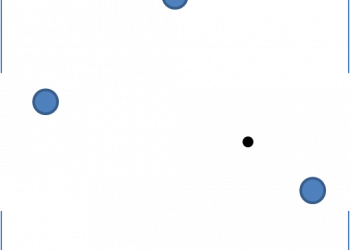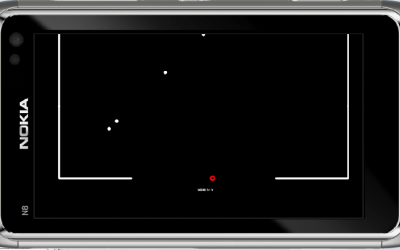Table of Contents
Name
Idea
The basic idea is a multi-player game over TCP/IP. In multi-player mode 2, the competition is between two players. The concept of the game is a single puck that is deflected by the players from their mobile screens to other players mobile screens. For each miss in deflection that player looses a life. Each player has 5 lives on the onset.
Moving the deflector (AKA Mallent) can be accomplished in two forms
- Moving the mobile device –> acceloremeter based
- Using keys –> For testing purposes
Features
These features have been ordered in priority manner
- Game onset → join game, game options and quit game
- User capability to control puck to multiple screen with only actual mobile device in game
- Networking feature to internconnect the two players
- Detection of winner, draw & looser
- Update users details on openents mallet, direction of puck & when puck is struck with mallet
- Polishing of the UI
QAirHockey milestones
- QSensor → Accelormeter control of game (DONE)
- QSound –> for user experience (DONE on simulator but dropped from device)
- Qt System info –> this enables players with different device types to play (DONE)
- Qt networking (DONE)
- Game setup, option & quit (DONE)
- WIN/ Loose decision (DONE)
- Qt mobility (1.2 ) –>qhapticfeedback (NOT DONE)
- Porting to Nokia N900 (DONE)
Implementation Plan and Goals
Our implementation has been split into 3 main parts
- Game logic & physics –> part where we place the puck on the screen and determine the protocol used to communicate to all stakeholders the current game situation
- UI interactivity
- Networking and protocol
This application is intended to be implemented on multiple devices to test the Qt run everywhere feature. However the first host devices in order will be
- Nokia N900 - freemantle
- Nokia N8 - Symbian^3
- Symbian s60 - Nokia N95
- Windows mobile 6.5 ?
Design
The stracture & design of the software
Screen shots
Simplified architecure
Codding experiences
- Relatively easy you get used to
- Especially the concept of slots & signals
- Well documented
- Plenty of decent library
- Messy with the new mobility api
- Some not very cleary documented aspects
- E.g. Deploy on windows CE/mobile
- Install the new mobility1.1 beta 2
- But all in all the experience was good
- Plenty of answers in the internet forums
Presentation slides
Presentation Slides:Slides
Report document
Source Package
version 1.01 qairhockey.zip






